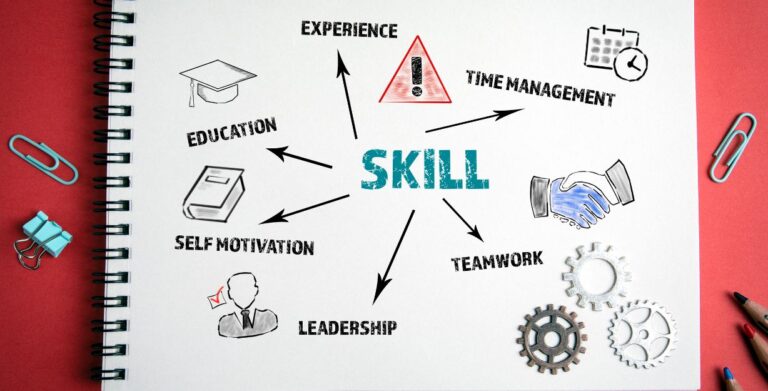What is a Creative in Marketing?
Marketing today is a vibrant, competitive space that demands more than just a traditional approach. In this crowded landscape, creativity often makes the difference between a campaign that connects and one that falls flat. But what does being “creative” in marketing really mean? Let’s unpack it step by step.

What is a Creative in Marketing?
In the context of marketing, a “creative” refers to any material or content designed to capture attention and inspire action. This could be an ad, a slogan, a video, a social media post, or even the design of a website. At its core, being creative in marketing means thinking outside the box to convey a message in a fresh and engaging way.
Creativity allows marketers to differentiate their brands in a sea of competitors. It breaks through the noise, grabs attention, and often forms a deep connection with the audience. Imagine Apple’s “Think Different” campaign—creative marketing at its finest, positioning Apple as a brand that encourages innovation and individuality.
The Evolution of Creative Marketing
Over the years, creative marketing has dramatically evolved. In the past, marketing creatives were confined to traditional media—TV, radio, print. But with the digital explosion, marketers now have an endless range of tools and platforms to craft their creative messages. Think social media ads, viral content, influencer campaigns, and interactive website designs. Creativity has expanded beyond flashy visuals into building authentic, engaging, and sharable experiences.
What is a Creative Concept in Marketing?
A creative concept is the foundational idea behind a marketing campaign. It’s the overarching theme that ties everything together, from messaging to visuals. Think of it as the campaign’s guiding light. A well-thought-out creative concept takes a brand’s message and expresses it in a way that resonates with its target audience.
For instance, Nike’s “Just Do It“ campaign is a creative concept built on the idea of empowerment and pushing personal limits. The simplicity and clarity of this concept have made it iconic in the world of advertising.
Elements of a Strong Creative Concept
A strong creative concept usually includes:
Unique Selling Proposition (USP): What sets your brand apart?
Storytelling: Emotionally engaging your audience through relatable narratives.
Audience Targeting: Crafting a message that speaks directly to the target demographic.
A well-developed concept adds coherence to your marketing campaign, ensuring that all creative materials serve a unified purpose.
What is a Creative Strategy?
A creative strategy is the detailed plan that explains how your marketing team will execute the creative concept. It’s the bridge between the creative concept and the overall marketing strategy, focusing on the “how” rather than just the “what.”
For example, if the creative concept is about adventure and exploration, the creative strategy will outline how to present that concept—whether through visually striking imagery, compelling copy, or an interactive experience.
Key Components of a Creative Strategy
Target Audience: Knowing who you’re speaking to shapes every creative decision.
Brand Voice: Ensuring that the creative aligns with the brand’s established personality.
Goals: Are you aiming for brand awareness, lead generation, or customer loyalty?
Messaging: What key message do you want to leave your audience with?

What is the Creative Process of a Marketing Campaign?
The creative process is the journey of turning an idea into a tangible campaign. It’s not just about brainstorming cool ideas but about structuring those ideas in a way that effectively communicates the campaign’s goals.
Steps in Developing a Marketing Campaign’s Creative Process
Research and Data Gathering: Understand your audience, competitors, and the marketplace.
Conceptualization: Brainstorm and sketch out rough ideas for messaging, visuals, and campaigns.
Design and Production: Develop the assets (videos, designs, text) needed to bring your concept to life.
Testing and Feedback: Before a full launch, test your creative with focus groups or A/B testing to see what resonates.
Examples of Successful Marketing Campaigns Using Creative Process
A great example is Coca-Cola’s “Share a Coke“ campaign. By personalizing Coke bottles with people’s names, the brand built a creative concept around connection and sharing. The strategy included targeting various demographics through social media and interactive experiences, such as encouraging users to post pictures of their Coke bottles.
Creative Thinking vs. Strategic Thinking in Marketing
While creative thinking is all about generating innovative ideas, strategic thinking focuses on planning, analyzing, and optimizing those ideas to achieve long-term success.
What is the Difference Between Creative and Strategic Thinking?
Creative thinking in marketing is often described as lateral thinking—approaching problems from unique, unexpected angles. It’s about imagination, innovation, and breaking conventions. On the other hand, strategic thinking is more methodical, centered on making decisions that align with a brand’s objectives and market conditions.
For instance, a creative thinker may come up with the idea to use an augmented reality filter to promote a product. A strategic thinker will determine whether this tactic aligns with the brand’s audience and objectives and evaluate how it fits into the bigger picture.
Balancing Creativity with Strategy in Marketing
For a campaign to be successful, creativity and strategy must go hand in hand. Too much creativity without strategic grounding can lead to a campaign that looks good but doesn’t achieve results. Conversely, overly strategic campaigns may lack the spark needed to capture the audience’s imagination.
Take Old Spice’s “The Man Your Man Could Smell Like” campaign. The creative concept was wildly humorous and unexpected, but it was paired with a strategic approach that effectively targeted their audience—leading to a massive spike in sales.
Common Challenges in Creative Marketing
One common challenge is hitting a creative block. Marketers can sometimes struggle to find new ideas that align with strategic goals. The solution often lies in collaboration and keeping the creative process flexible.
Another challenge is balancing creativity with budget constraints. While a highly creative idea might be appealing, it also needs to be feasible within the available resources.
Wrap up:
Creativity in marketing isn’t just about flashy visuals or catchy slogans—it’s about making a meaningful connection with your audience. When combined with a solid strategy, creativity becomes a powerful tool that drives engagement, builds brand loyalty, and ultimately leads to business success.
FAQs
1. What are the key qualities of a good creative marketer?
A good creative marketer is innovative, adaptable, and has a deep understanding of both their audience and brand. They can think outside the box while keeping the brand’s goals in mind.
2. How do you measure the success of a creative marketing campaign?
Success is often measured through key metrics such as engagement rates, lead generation, sales conversion, and brand awareness.
3. What tools are essential for creative marketing?
Tools like Adobe Creative Suite for design, Google Analytics for performance tracking, and platforms like Canva for creating visuals are essential in modern creative marketing.
4. Can creativity be learned in marketing, or is it innate?
While some people may have a natural knack for creativity, it can definitely be cultivated with practice, exposure to different ideas, and learning techniques like brainstorming and mind mapping.
5. How do creative agencies collaborate with brands?
Agencies typically work closely with brands to understand their objectives, audience, and tone. They develop creative concepts and strategies that align with the brand’s goals while offering fresh perspectives.






